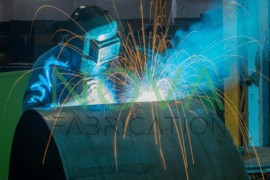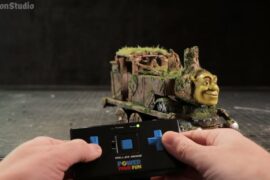We’re living in a world of daily product launches. If you’re reading this, you’re likely considering your own or, at the very least, dream of making riches by bringing the ultimate, life-altering product to market. Whether that is done through crowd sourcing, investor sourcing or mother-in-law sourcing, there will always be a point when that brilliant idea needs to become a brilliant reality. Manufacturing. It’s the gray area; the “part they don’t tell you about in school.”
When do you start sourcing a manufacturer? How do you deal with quotes? Language barriers? Manufacturing process? An awful bout of dysentery after traveling around the world to visit factories? Well, according to Bi-Link, a Mechanical Components Contract Manufacturer, you don’t have to deal with any of that. We talk with President, Ray Ziganto, about how they blast past the pain points of product manufacturing and get three key pieces of advice on handling the manufacturing phase, along the way.
What does Bi-Link do and what types of people/companies/start-ups are you helping?
We’re an international Mechanical Components Contract Manufacturer (factories in the U.S., Mexico and China). We help engineers from start-ups to Fortune 100 OEM’s with Product/Component Design, Concept/Model development, Prototypes, Pilot-Production, all the way through High Volume Manufacturing. Our focus is on precision metal stamping, injection/insert molding, assembly automation, tooling and all of the support functions that go along with that. We currently serve the Wireless, Medical Device, and Consumer/Industrial electronics markets.
What are the crucial points to remember when having a prototype made and designing for manufacturability?
“Things” don’t scale like “Code.” With the technology available today… and I’m specifically referencing 3D Printing, it’s very easy to make a small number of parts that cannot be produced by traditional high-volume manufacturing methods. The majority of mechanical part manufacturing is still “tooling intensive.”
My number one piece of advice to designers is to make sure you are seeking out input from supplier/partners that have the tooling background necessary to produce their component/product.
My second piece of advice is to get your supplier/partner involved at the very earliest stages of development.
Third, a good supplier/partner will ask how the part/sub-assembly will be handled on the assembly line and what the critical features are for form, fit, and function.
What’s the biggest mistake made when designers/engineers get to the point where they need to procure quotes to have their product manufactured?
All too often, the first time a new design has seen the light of day is when it’s sent out for quote. That greatly constrains the ability of a good supplier/partner to offer suggestions that can save cost, improve quality yields, and often improve overall performance. What is the solution? Open Innovation. Engage with your supplier/partner as early as you can. And (this is big) make sure you’re not required to manage all of the ‘hand-offs’ from Designer to 3D Model to Proto to High Volume Production sources. If that’s not all happening from one source, you risk delays/errors due to information gaps between unrelated companies. The only way to manage those unnecessary gaps is for the engineer (or other technical staff from his/her company) to actively manage the supply chain themselves. Is that really the best use of their time & talents?
How can designers/engineers become more familiar with the quoting/manufacturing/shipping process?
Not to be a wise-ass, but why on earth should they? That’s my job, and if I’m doing it correctly, these activities should be happening quickly, automatically, and efficiently. In basic terms, designers need to know what they can expect (correct/complete execution of their optimized design), how much it will cost (tooling, unit cost), and when they can expect it (how/when it will ship).
How does Bi-Link help designers/engineers have a smooth product development cycle through prototype and manufacturing?
That’s my favorite question: When designers and engineers plug into Bi-Link, we can take them all of the way from Concept/Design Optimization thru High Volume Manufacturing…we’re one company, no “Joint Ventures”, we started/own all of our facilities, and we actually talk to each other.







